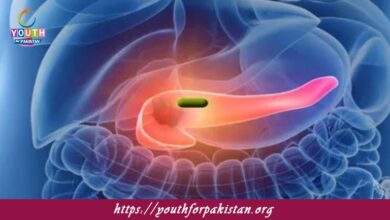Structure of viruses MDCAT MCQs with Answers
Welcome to the Structure of viruses MDCAT MCQs with Answers. In this post, we have shared Structure of viruses Multiple Choice Questions and Answers for PMC MDCAT 2024. Each question in MDCAT Biology offers a chance to enhance your knowledge regarding Structure of viruses MCQs in this MDCAT Online Test.
Which of the following components is found in all viruses?
a) Cell membrane
b) Ribosomes
c) Nucleic acid
d) Cytoplasm
What is the outer protein coat of a virus called?
a) Capsid
b) Envelope
c) Nucleocapsid
d) Peplomer
Which virus structure component protects the nucleic acid from degradation?
a) Envelope
b) Capsid
c) Glycoprotein
d) Matrix protein
What is the function of the viral envelope?
a) Protects the virus from host immune responses
b) Assists in viral replication
c) Stores viral nucleic acid
d) Facilitates attachment to host cells
Which of the following viruses have a helical capsid structure?
a) Influenza virus
b) Adenovirus
c) Herpesvirus
d) Poliovirus
What type of nucleic acid can be found in viruses?
a) Only DNA
b) Only RNA
c) Both DNA and RNA
d) Neither DNA nor RNA
Which virus structure component is involved in the viral entry into host cells?
a) Capsid
b) Envelope
c) Nucleic acid
d) Matrix protein
What is the primary structural difference between enveloped and non-enveloped viruses?
a) Presence or absence of a lipid membrane
b) Presence or absence of a capsid
c) Type of nucleic acid
d) Shape of the virus
Which of the following viruses has an icosahedral capsid?
a) Herpesvirus
b) Influenza virus
c) Tobacco mosaic virus
d) Human Immunodeficiency Virus (HIV)
Which component of the virus determines its specificity to a host cell?
a) Envelope
b) Capsid proteins
c) Nucleic acid
d) Matrix proteins
What is the term for a virus that has a lipid bilayer derived from the host cell membrane?
a) Non-enveloped virus
b) Enveloped virus
c) Naked virus
d) Complex virus
Which of the following viruses has a complex structure, including a head and tail?
a) Bacteriophage
b) Influenza virus
c) HIV
d) Adenovirus
What is the role of viral glycoproteins?
a) Protect the viral nucleic acid
b) Facilitate viral entry into host cells
c) Provide structural support to the virus
d) Replicate viral nucleic acids
Which virus structure component is often used to classify viruses into different families?
a) Envelope
b) Capsid
c) Nucleic acid type
d) Matrix proteins
Which virus structure is characterized by a helical symmetry?
a) Tobacco mosaic virus
b) Herpesvirus
c) Adenovirus
d) Papillomavirus
What does the term “nucleocapsid” refer to in a virus?
a) The capsid and nucleic acid combined
b) The envelope and capsid
c) The viral matrix proteins
d) The viral glycoproteins
Which virus structure component is responsible for viral assembly and budding from host cells?
a) Capsid
b) Envelope
c) Glycoprotein
d) Nucleic acid
What is the basic unit of the viral capsid called?
a) Capsomer
b) Nucleocapsid
c) Peplomer
d) Matrix protein
Which virus structure component provides protection to the viral nucleic acid during transmission?
a) Envelope
b) Capsid
c) Glycoprotein
d) Matrix protein
Which structure is absent in a non-enveloped virus?
a) Capsid
b) Nucleic acid
c) Envelope
d) Glycoproteins
What type of symmetry is found in icosahedral viruses?
a) Helical
b) Cubic
c) Complex
d) Spherical
Which viral structure is involved in the recognition and binding to host cell receptors?
a) Capsid proteins
b) Envelope
c) Nucleic acid
d) Matrix proteins
Which viruses are known to possess a lipid envelope?
a) Hepatitis B and C viruses
b) Influenza and HIV viruses
c) Adenovirus and Herpesvirus
d) Papillomavirus and Parvovirus
What is the primary role of the matrix protein in an enveloped virus?
a) Form the envelope
b) Link the envelope with the capsid
c) Protect the nucleic acid
d) Facilitate viral replication
Which type of virus structure is characterized by having a complex shape with multiple layers?
a) Bacteriophage
b) Influenza virus
c) Adenovirus
d) Herpesvirus
What component is responsible for the helical arrangement in some viruses?
a) Capsomers
b) Envelope proteins
c) Nucleic acid
d) Glycoproteins
Which viruses have a double-layered protein coat?
a) Reoviruses
b) Retroviruses
c) Orthomyxoviruses
d) Coronaviruses
Which virus structure component is most often used for diagnostic purposes?
a) Capsid proteins
b) Envelope
c) Nucleic acid
d) Glycoproteins
What is the characteristic shape of the tobacco mosaic virus?
a) Helical
b) Icosahedral
c) Spherical
d) Complex
Which of the following viruses is known for having a segmented RNA genome?
a) Influenza virus
b) Adenovirus
c) Herpesvirus
d) Poliovirus
What is the term for viruses that lack a lipid envelope?
a) Enveloped viruses
b) Naked viruses
c) Complex viruses
d) Helical viruses
Which virus structure component helps in viral entry and fusion with the host cell membrane?
a) Capsid
b) Glycoprotein
c) Matrix protein
d) Nucleocapsid
What type of virus structure is observed in the adenovirus?
a) Icosahedral
b) Helical
c) Complex
d) Spherical
What is the main structural difference between a retrovirus and a typical virus?
a) Presence of reverse transcriptase
b) Type of nucleic acid
c) Presence of envelope
d) Shape of the capsid
Which virus component is responsible for attaching the virus to specific receptors on the host cell?
a) Capsid proteins
b) Envelope
c) Nucleic acid
d) Matrix proteins
What structure in the virus determines its shape and symmetry?
a) Capsid
b) Nucleocapsid
c) Envelope
d) Matrix proteins
Which virus structure is responsible for the virus’s ability to evade the immune system?
a) Envelope
b) Capsid
c) Nucleic acid
d) Matrix protein
What type of symmetry is found in spherical viruses?
a) Helical
b) Icosahedral
c) Complex
d) Cubic
Which virus structure component is involved in the release of viral particles from the host cell?
a) Envelope proteins
b) Capsid
c) Glycoproteins
d) Nucleic acid
What is the role of viral matrix proteins?
a) Provide structural support
b) Protect the nucleic acid
c) Facilitate viral replication
d) Assist in viral entry
Which virus structure is often described as “spiky” due to protrusions on its surface?
a) Influenza virus
b) HIV
c) Herpesvirus
d) Adenovirus
Which component of a virus is most variable among different virus types?
a) Nucleic acid
b) Capsid
c) Envelope
d) Glycoproteins
If you are interested to enhance your knowledge regarding Physics, Chemistry, Computer, and Biology please click on the link of each category, you will be redirected to dedicated website for each category.




